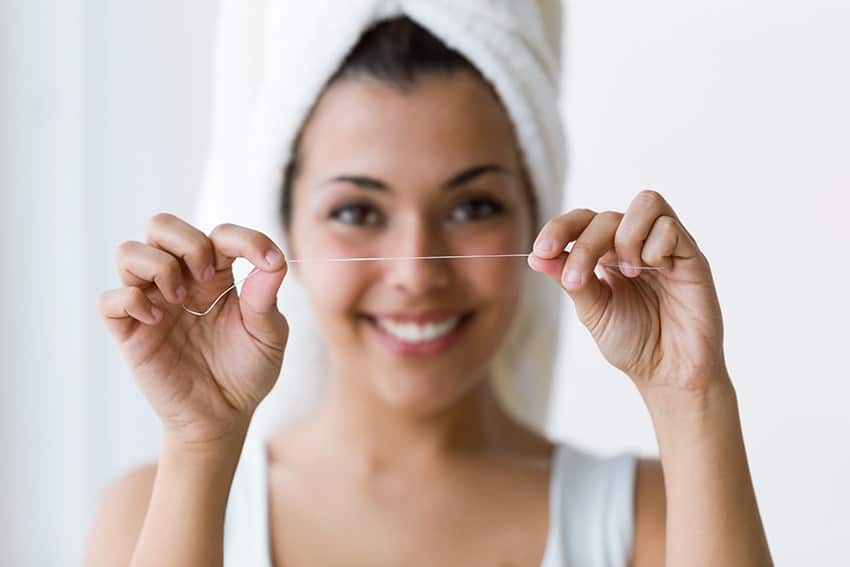“Been flossing,” asks the hygienist. “Sometimes,” you answer, which can mean once a month, once a week or just before the appointment, right?
Dental professionals like Dr. Mandy Grimshaw can tell if a person has been flossing correctly or not. The key word here is correctly. I want to make you aware, not guilty.
Did you ever notice there are no instructions on a package of floss, a toothbrush or a tongue scraper detailing how to or why to use the products? Both need to be used correctly to get maximum results for healthy gums and teeth.
It is a simple fact that clean gums and clean teeth do not get infected. Both decay and gum disease are bacterial infections that can spread throughout the body.

How to Floss
Each tooth has four sides: cheek side, tongue side and two in-between sides. A toothbrush only gets the cheek and tongue side. Floss gets the in-between sides. If you just brush and don’t clean the sides, you are missing anywhere from 20-40 percent of the teeth. It is kind of like only cleaning 60 percent of your kitchen after cooking a big meal.
Food stuck between the teeth can and will stay there for a long time. It becomes a breeding ground for the bacteria that cause decay and gum disease. Toothpicks only push out some of the food and don’t clean between the teeth or the gums. They only push the big particles through and don’t take the place of floss.
Be sure floss is sliding below the gums. This is a good thing because that simple swiping of floss will alter the bacteria below the gums. The bacteria that cause gum disease are killed by oxygen.
Just that one action introduces enough oxygen to kill the bad bugs while physically cleaning below the gums. If your gums bleed upon flossing, you have some form of gum disease. There is a saying, “If it bleeds, it needs.”
The easiest way to visualize proper flossing is to hold the floss tightly next to the side of the tooth forming a C, as the picture demonstrates. As you swipe down in between teeth, you are removing food debris and bacteria from the teeth. Continue to floss to below the gums in order to clean there.
Here is another reason the dental profession push brushing and flossing as strong as they do: they actually care about your dental health, and they care about you.
Yes, dentistry can be expensive and a hassle; but the best dentistry is no dentistry at all, and that can be achieved by keeping your teeth perfectly clean. As I said above, clean teeth do not get dental disease.
If it has been awhile since your last dental visit, please pick up the phone and call Kuhn Dental at (910) 692-4450.




